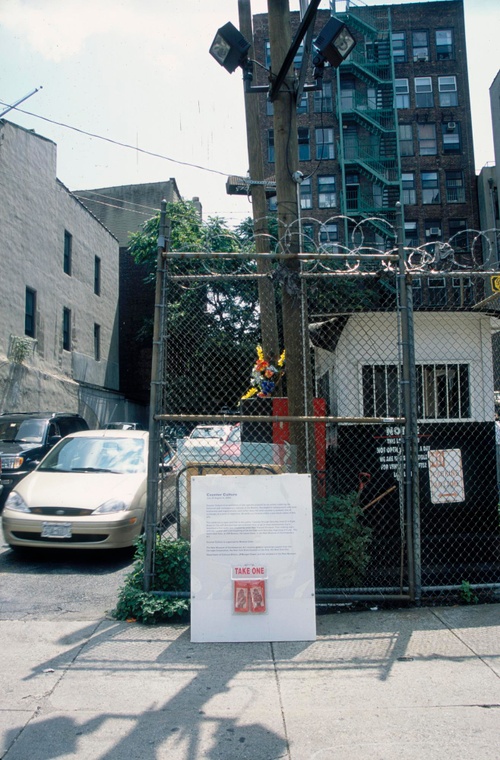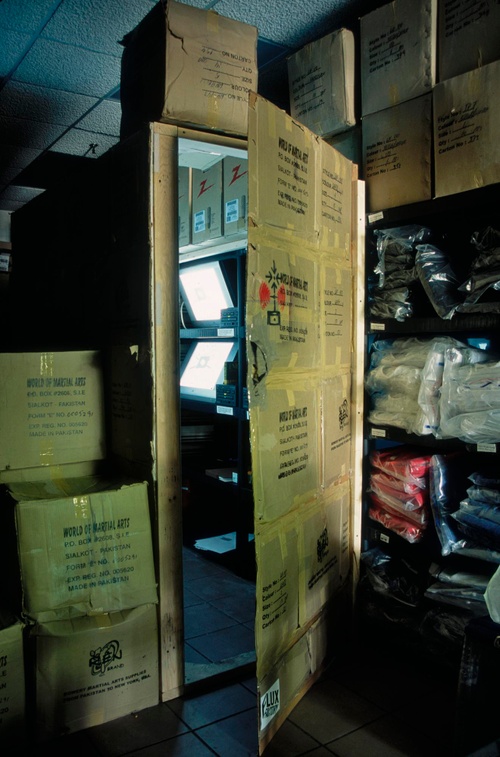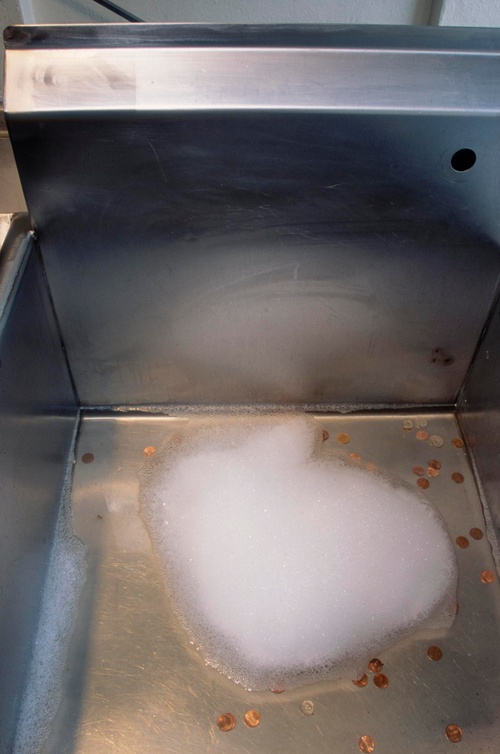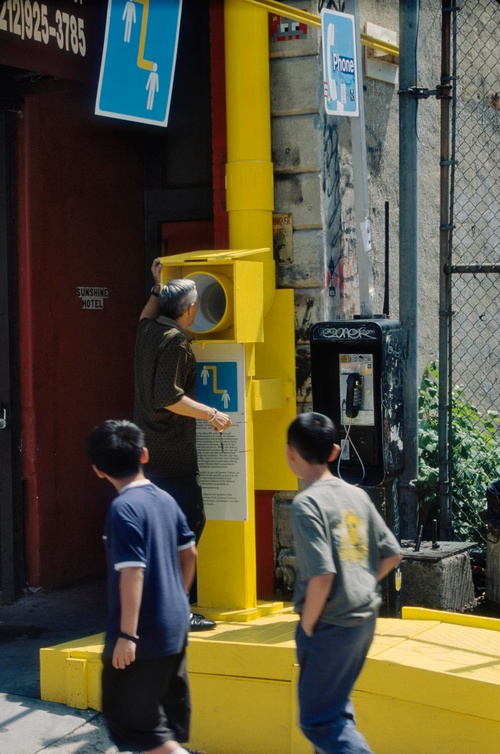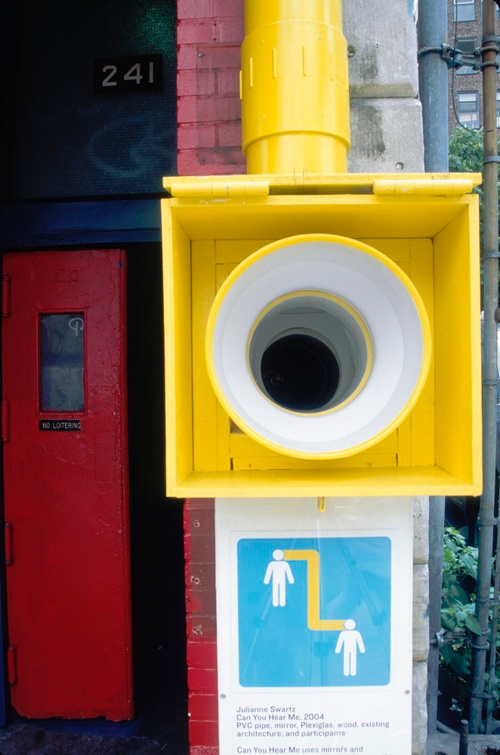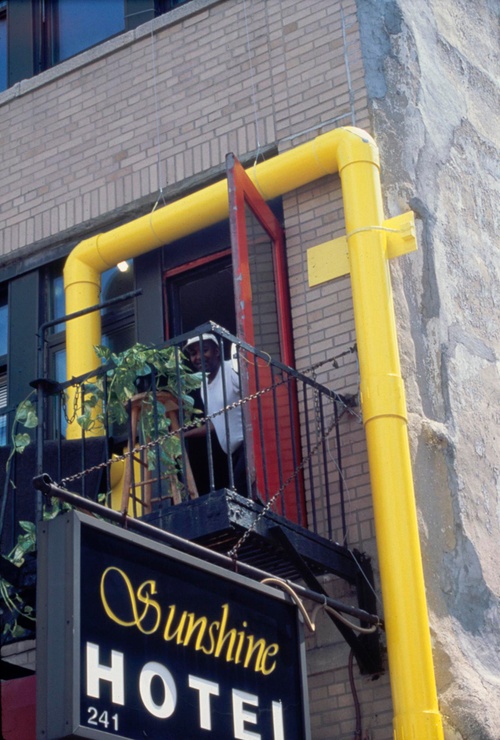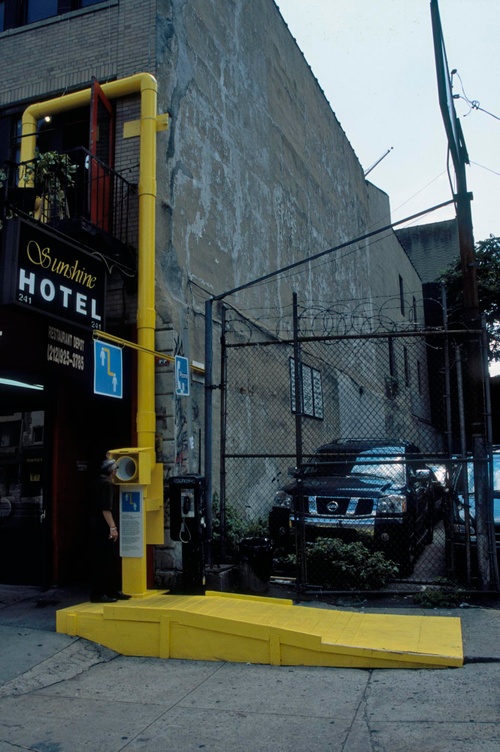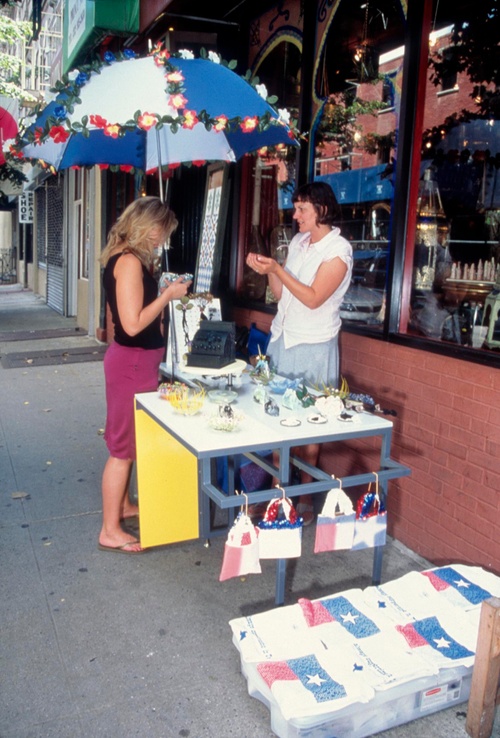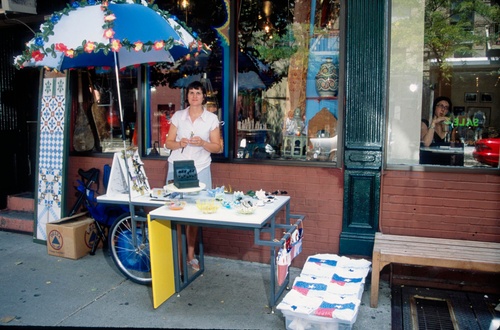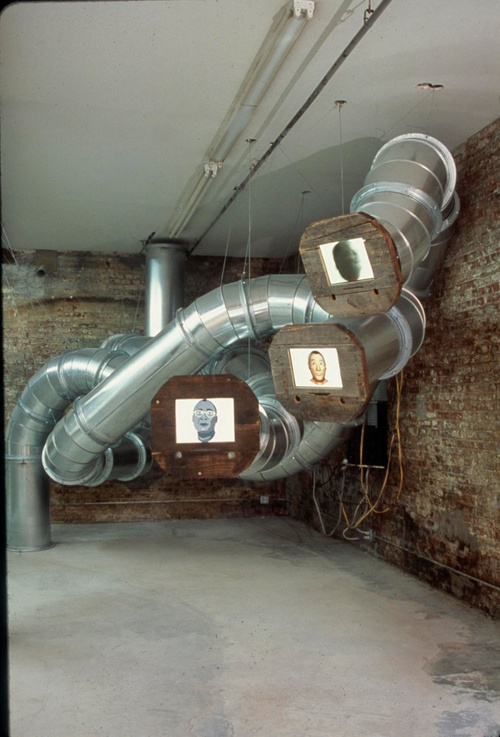Counter Culture
Counter Culture
Exhibitions
Counter Culture
July 10 – August 14 2004
Counter Culture is an exhibition featuring site-specific interventions by six contemporary New York artists: Raul Vincent Enriquez, Flux Factory, Ricardo Miranda Zuñiga, Jean Shin, Julianne Swartz and Marion Wilson. The exhibition, which is free and open to the public, explores the commerce and cultural diversity of the neighborhoods surrounding the Bowery-the future home of the New Museum-by pairing each of the six artists with a small business or organization in the area. Counter Culture is organized by Melanie Cohn.
A self-guided walking tour created by artist Raul Vincent Enriquez-including interviews and exchanges between shop owners, customers and the artists in the exhibition - directs visitors to the five other projects in the exhibition. The walking tour, entitled Audio, Map, and Icon (2004), is available on www.newmuseum.org in MP3 or PDF format and is distributed in CD format at participating businesses. The collective known as Flux Factory presents Secret Spaces (2004), an installation in an area of Bowery Martial Arts (246 Bowery) not usually accessible to customers. A password, included on the walking tour map and MP3 and at the store itself, allows visitors to access to a hidden, alternate realm. Each Flux Factory member leaves something to be discovered by visitors once inside the secret space, including various missions that visitors can read about and, if desired, perform. Missions range from the silly to the sublime, from clandestine deeds requiring the greatest stealth and cunning to truly trivial fun. Some missions relate to the historical topography or psycho-geography of the neighborhood, while on others, visitors are sent shopping.
In From Darkness to Daylight (2004), Ricardo Miranda Zuñiga constructs an installation at SILO (1 Freeman Alley, off of Rivington Street between the Bowery and Chrystie Street) reflecting on the history and future of the Bowery. The sculptural work is made of a series of large ducts, similar to those found in the alley itself, that are interwoven. At the end of each duct, a monitor features a computer animated character reflecting different histories of the Bowery. Each animation is based upon a real resident of the Bowery and features their actual voice from recorded interviews with the artist. The animations interact with one another creating overlapping narratives that represent distinct stories that span the past 150 years and imagine the future of the Bowery neighborhood. For detailed information on the Bowery project CLICK HERE.
Jean Shin places one specially designed, stainless steel counter sink filled with sudsy water outside the NoLiTa restaurant Public (210 Elizabeth Street) for her installation Wishing Well (2004). Pedestrians, shoppers and restaurant employees are encouraged to toss pennies into the sinks and make a wish. Inside the restaurant, visible to all patrons, is a larger fountain specially created by the artist. Shin’s sink counters, familiar to many of the vast number of immigrants that work in the kitchens of New York restaurants, symbolize the immigrant pursuit of the “American Dream,” a story common to the history of the Bowery.
Using lenses, magnets, hoses, and screens, Julianne Swartz creates sculptures that make circuits or journeys through space. Swartz’s Can You Hear Me (2004) consists of a pipe system stretching from the Bowery’s Sunshine Hotel to its ground-floor neighbor, Bari Restaurant Supply (both at 241 Bowery). This system, made from duct pipe and mirror and visible along the façade of the building, creates a visual and audible link between these two environments, as passers-by have the opportunity to peek inside the hotel and perhaps interact with its residents.
In creating This Store Too (2004), Marion Wilson was inspired by the philosophy of the neighborhood Bowery Mission - that the rehabilitation of the person must be physical, financial, and spiritual. In partnership with the Bowery Mission, a local homeless organization, Marion Wilson creates “merchandise” with the assistance of a person in a local residential program. Each person collaborating with Wilson contributes an object or suggest an idea, which Wilson will then turn into a sculptural object. The object is then be sold at a specially created pushcart in front of various local businesses around the Bowery, with all decisions for marketing and sales made in conjunction with the local resident and a percentage of sale profits donated to the homeless program. By displaying and selling memories and stories, Wilson provides opportunity for needy individuals to participate in commercial exchange.
A self-guided walking tour created by artist Raul Vincent Enriquez-including interviews and exchanges between shop owners, customers and the artists in the exhibition - directs visitors to the five other projects in the exhibition. The walking tour, entitled Audio, Map, and Icon (2004), is available on www.newmuseum.org in MP3 or PDF format and is distributed in CD format at participating businesses. The collective known as Flux Factory presents Secret Spaces (2004), an installation in an area of Bowery Martial Arts (246 Bowery) not usually accessible to customers. A password, included on the walking tour map and MP3 and at the store itself, allows visitors to access to a hidden, alternate realm. Each Flux Factory member leaves something to be discovered by visitors once inside the secret space, including various missions that visitors can read about and, if desired, perform. Missions range from the silly to the sublime, from clandestine deeds requiring the greatest stealth and cunning to truly trivial fun. Some missions relate to the historical topography or psycho-geography of the neighborhood, while on others, visitors are sent shopping.
In From Darkness to Daylight (2004), Ricardo Miranda Zuñiga constructs an installation at SILO (1 Freeman Alley, off of Rivington Street between the Bowery and Chrystie Street) reflecting on the history and future of the Bowery. The sculptural work is made of a series of large ducts, similar to those found in the alley itself, that are interwoven. At the end of each duct, a monitor features a computer animated character reflecting different histories of the Bowery. Each animation is based upon a real resident of the Bowery and features their actual voice from recorded interviews with the artist. The animations interact with one another creating overlapping narratives that represent distinct stories that span the past 150 years and imagine the future of the Bowery neighborhood. For detailed information on the Bowery project CLICK HERE.
Jean Shin places one specially designed, stainless steel counter sink filled with sudsy water outside the NoLiTa restaurant Public (210 Elizabeth Street) for her installation Wishing Well (2004). Pedestrians, shoppers and restaurant employees are encouraged to toss pennies into the sinks and make a wish. Inside the restaurant, visible to all patrons, is a larger fountain specially created by the artist. Shin’s sink counters, familiar to many of the vast number of immigrants that work in the kitchens of New York restaurants, symbolize the immigrant pursuit of the “American Dream,” a story common to the history of the Bowery.
Using lenses, magnets, hoses, and screens, Julianne Swartz creates sculptures that make circuits or journeys through space. Swartz’s Can You Hear Me (2004) consists of a pipe system stretching from the Bowery’s Sunshine Hotel to its ground-floor neighbor, Bari Restaurant Supply (both at 241 Bowery). This system, made from duct pipe and mirror and visible along the façade of the building, creates a visual and audible link between these two environments, as passers-by have the opportunity to peek inside the hotel and perhaps interact with its residents.
In creating This Store Too (2004), Marion Wilson was inspired by the philosophy of the neighborhood Bowery Mission - that the rehabilitation of the person must be physical, financial, and spiritual. In partnership with the Bowery Mission, a local homeless organization, Marion Wilson creates “merchandise” with the assistance of a person in a local residential program. Each person collaborating with Wilson contributes an object or suggest an idea, which Wilson will then turn into a sculptural object. The object is then be sold at a specially created pushcart in front of various local businesses around the Bowery, with all decisions for marketing and sales made in conjunction with the local resident and a percentage of sale profits donated to the homeless program. By displaying and selling memories and stories, Wilson provides opportunity for needy individuals to participate in commercial exchange.
July 10 – August 14 2004
